I bashed my head on the frame of the pickup in an unconscious attempt at sitting up, perhaps dream initiated. This was the second time. Awake, first forgetting where I was, but rudely brought back to reality by unyielding steel on forehead. I’m surrounded by the noise of truck traffic, helicopters in landing and take-off, and incessant radio chatter over PA. It all comes back to me.
I’m sweaty and hot under a pickup truck parked in unrelenting sunlight in a shade-less opening—a “park”– in the otherwise unbroken forest. Right now, the meadow is the home of the Lake Mountain Fire Camp. This is the third fire camp location. The previous two were burned over by the firestorm that left nothing except charcoal and kiln baked dirt. Blinking, I blankly stare at the dust crusted undercarriage of the Dodge 4×4 pickup overhead, fully waking up before I emerge into the oppressive high 90s heat.
I’m wearing the same Nomex fire-proof clothing I started my shift in 10 days ago, now dirt and black ash crusted. Sweat permeated. The smell of body odor (mine) and the chemical treat smell of nomex mingled in a familiar but sick of it scent.
The sun is hot and bright here on this, the 9th of July 1985, because we are upwind of a conflagration. I know this because I saw it firsthand as an apprentice to a fire line scout the day before. In this day before Google Earth, drones, and immediate remote sensing, we hand mapped the fire perimeter on aerial photos and transferred those lines to topographic maps.
Which meant we had to find it on the ground.
The way we found the front was by a hunch, yesterday’s maps, and the incredible gale force of wind that blew from our backs as we approached the front. The wind was oxygen getting sucked by a ravenous, deep inhaling beast of a fire gone hellish. After bumping our way by pickup on a barely passable trail through a thick forest of Lodgepole pine swaying in the incessant wind, we hiked to a ridge. We stopped at the top, and stood a moment looking over an alpine meadow, transfixed by 350-foot flames churning through thick forest at the base of a small hill just 100 yards away.
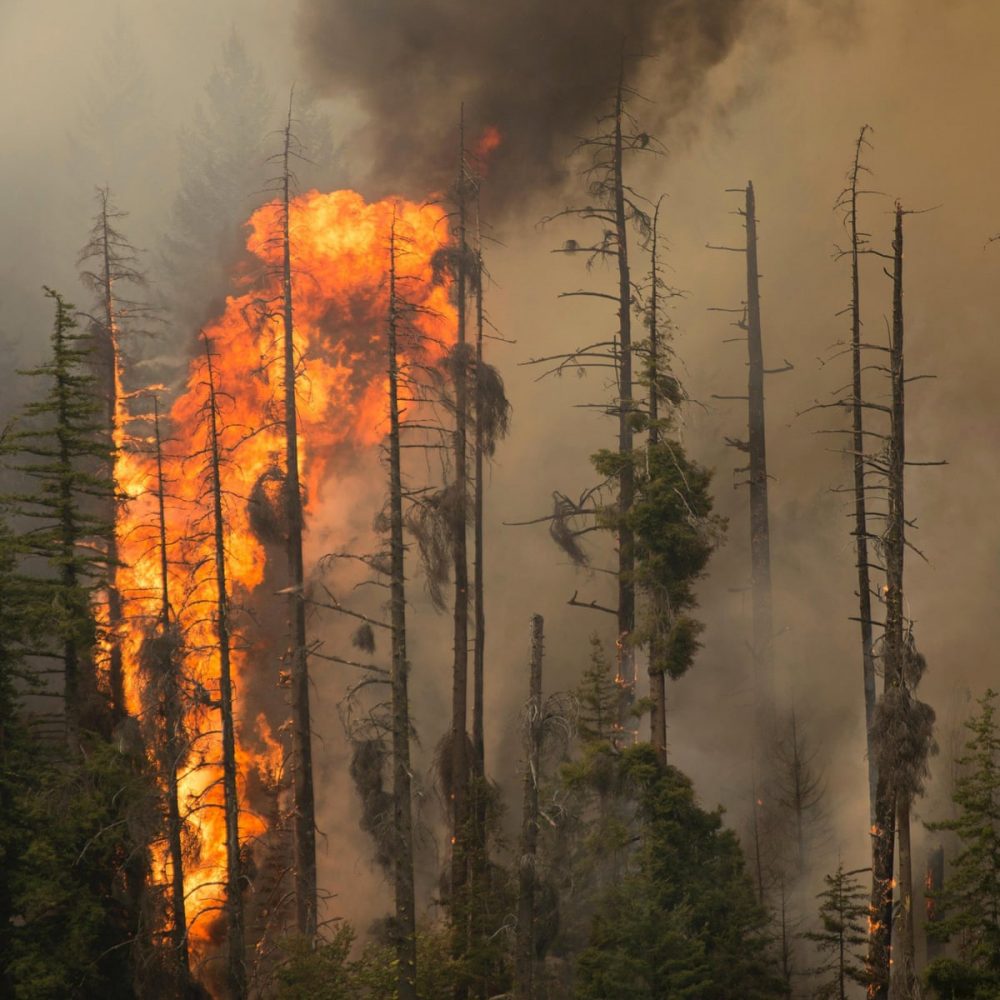
The heat was an in our face 400-degree open oven door like when you check the prime rib— radiant heat, as the wind wasn’t from the fire—it was to it. I couldn’t stand it for more than a few seconds before I felt my hair curling on the way to a singe.
“Run!” the aging, a little overweight, and long-gray bearded scout yelled. I didn’t have time to imagine that beard singeing to nothingness, because if we stood for another moment, it would in reality.
We ran. And made the pickup we left parked in the right way (“might need to get outta here fast” gray beard mentioned earlier) to escape down the rock and log strewn fire line, cleared of vegetation the day before by massive D-8 caterpillar bulldozers.
Thank God the truck started. We both knew we would have been toast if it didn’t. Within minutes, the forest was incinerated where we had parked. It took us a half hour before we could speak again.
The next day, I went back on night shift—hence sleeping under pickups during the daylight hours. “Make sure you got the keys in your pocket before crashing under one of them trucks,” the crew boss would tell us. It ensured that no-one drove your truck away—with you under it.
Overall, it was a nice break from hot daytime fire line work at the beginning of the stint, and then fire scout. I was re-assigned to the non-gruntish work of material transportation—hauling tools, water, pumps, firefighters to wherever they were needed. I would be handed a radio and a map with a drop point sharpied on it, denoting where, what and when I needed to be. My job was to find the spot in miles of miles of unbroken forest, only crisscrossed by old logging roads and trails.
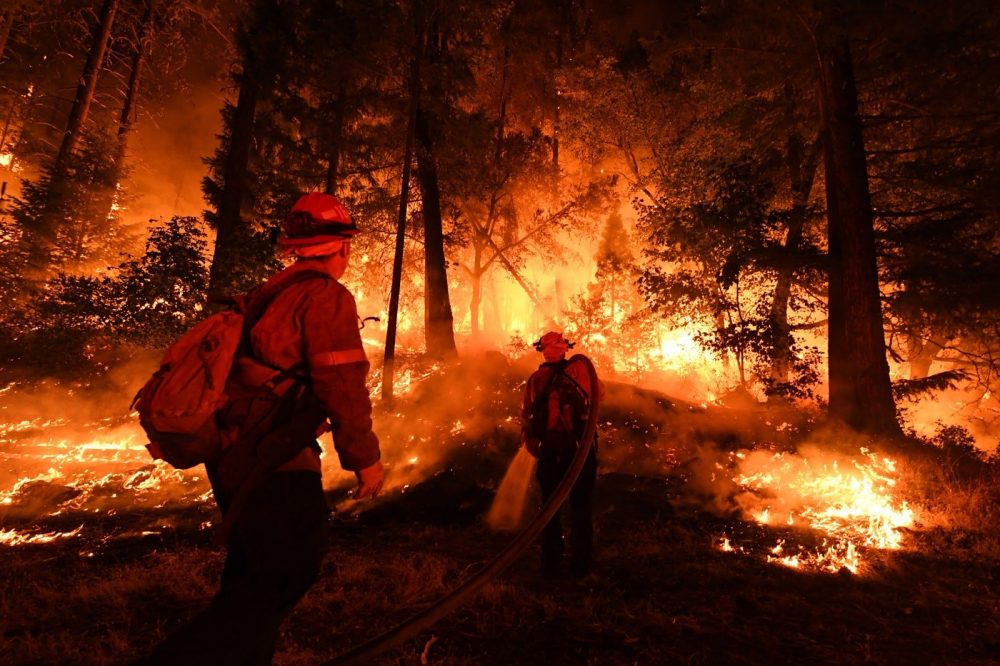
I travelled at night because it was safer. The fire would “lay down” as temperatures dropped in our montane environs, and humidity went up. Extreme wildfire behavior would yield to the night.
And we transportation guys would drive, usually alone. We ran through checkpoints in the safety of the “black” (burned over areas now cooled and unlikely to burn) and travelled on the one-lane serpentine logging roads with a flagstick, one vehicle, one way at a time, navigating by obscure cones of light on high beam.
I cranked my windows tight and put a bandanna over mouth and nose trying to maintain breathing through smoke so dense I could only see 15 feet of two track road in my brightest beams. I could feel the heat through pickup windows and see the glow of trees still burning from today’s overburn. It would have been impossible to pass here a few hours earlier. Tires would have melted; engines overheated; truck burned. Human would not survive. Unthinkable.
But in the night shift, at 2 AM, we could get through. Mostly. The road was usually littered with fallen trees. If the logs weren’t burning, I could bump over the smaller ones in four-wheel drive. I only hoped I would not need to slam on the brakes and get on that radio to shout those dreaded words: “Got a tree down here!” If I had a tree I couldn’t get past, I would be stuck in this smokey hot hellhole for a couple hours waiting for the saw crew.
And finally, the smoke backed off a little as I approached the black on the other side, and the flashing lights of the other side checkpoint emerged from the blackness. I slid my bandanna down, rolled down window, and gulped fresh night air. I handed my flagstick rite of passage to the checkpoint Charlie, and he or she would hand it to the waiting rig to go back the way I had come.
There are 400 people on this fire. Five helicopters. 20 backcountry fire engines. A constant stream of spotter planes and DC-3 air tankers rumble overhead. We’re all stationed at 7,000 foot elevation, on the backbone of the Salmon River mountains, on the two-track trail over Lake Mountain that leads to Iron Lake.
In case you can’t tell, these were the days of cowboy, redneck firefighting. I enjoyed it. But safe it was not.
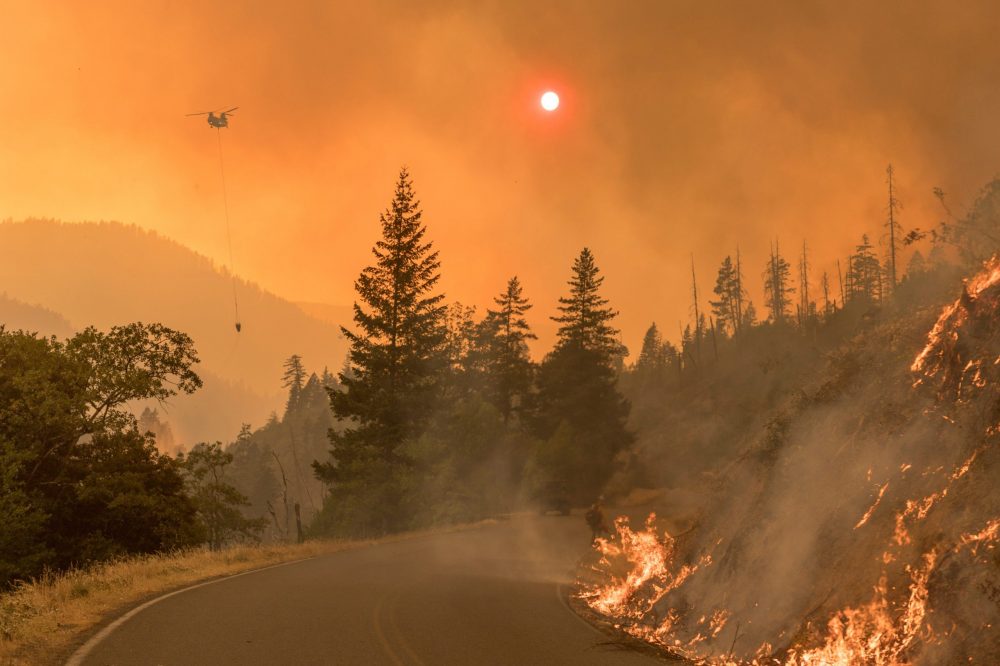
How did this happen? Well, our story starts a few years back and went something like this…
In 1975, just 10 years prior on a June day, when I was celebrating summer off from 6th grade, a tiny female beetle scientifically labeled with the Dendroctonus genus alighted on a 12-inch diameter straight trunked lodgepole pine tree along the Salmon River Mountain ridge, just a half mile from where I drove between checkpoints that night. This black or dark brown beetle was only 5 millimeters long—about the size of a grain of rice. She selected this particular tree due to its size. I think it wasn’t something she could determine by sight; it was more the feel of the curvature, or the measurement of the angle between the straight line of tangent and curve of the potato chip bark of the pine.
The reason for the sizable specimen? In a few words, phloem and cambium thickness, characteristic of large lodgepole pines. Phloem are the transporting tubes in a tree that send sugars from the roots up into the crown of a tree to feed new shoots and pine needles. Cambium is the soft and juicy growth tissue of the tree. Both are favorites of our little rice sized beetle. She bores through the bark hungrily and finds beetle gold underneath the dead and gray bark of the outer bole of the tree.
And immediately, she starts jetting out fragrant fog (at least to a beetle) releases of pheromones, both to attract her potential male suitors, but also altruistically to alert other females that the getting of victuals is good.
She begins to bore vertically through the cambium as she eats, then, after mating, horizontally in dendritic “galleries,” in each of which she deposits an egg. As she is doing so, she does two things: first, she girdles the critical growing part of the tree, and disrupts the nutrient pathway of it up and down the vessels, or vertical pipelines of the tree.
Second, she infects the lodgepole with the blue stain fungus (so called because of the blue staining that occurs in infected wood (which because it is pretty, is highly desired for wood trim in homes and furniture). The fungus spreads rapidly also disrupting the tree’s “blood” flow. And with her two-fisted punch, along with her sending her fragrant message out in the forest atmosphere, the tree can’t keep up, and dies when literally hundreds of pine beetles just like her attack.
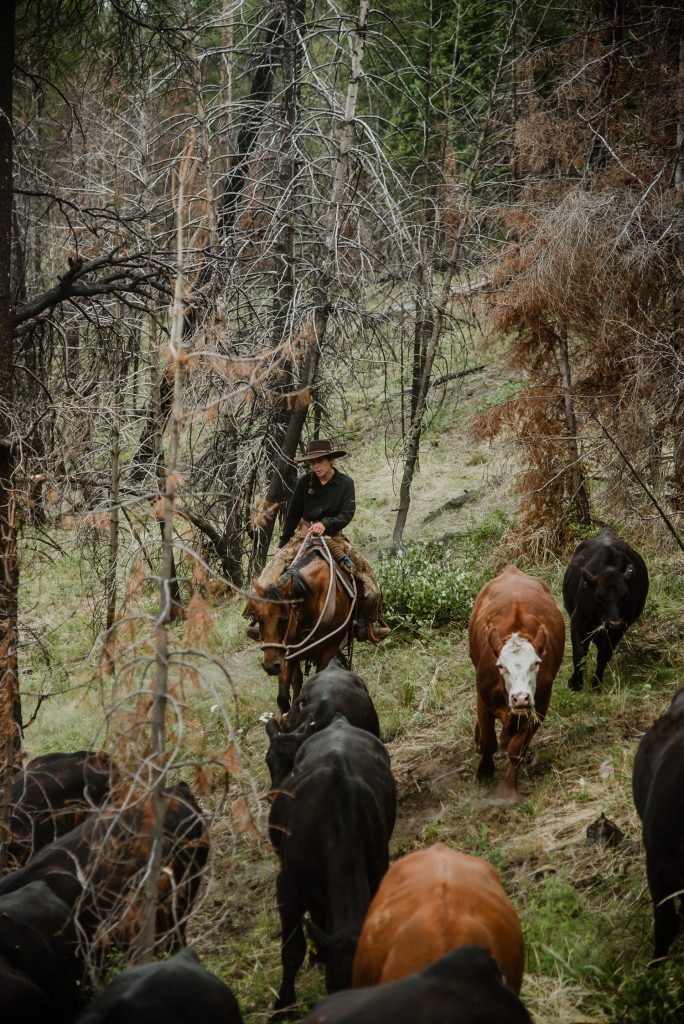
So, our living tree is now a skeleton. And on a thunderstorming afternoon on July 3, 1985, now ten years later, it still stands. The rain comes with the lightning and the thunder and soaks the graying bole of the tree.
Said tree is now a conductor. It’s one of the tallest trees on this particular ridge, so called “Pepper Creek Ridge” on the USGS 7.5-minute topographic maps. A massive cumulonimbus thunderhead, reaching 35,000 feet above ground level, built by moisture evaporating off the likes of that snowy trio of peaks called Three Sisters on Oregon’s Cascade Mountain Range near Bend Oregon, happens to have built up an incredible amount of electrical charge difference between the top and bottom of the foggy massif of white thunderhead.
And so, an arc can form from the ground in the form of lightning. A typical flash of lightning can cause the air temperature around the bolt to exceed 25,000 degrees Fahrenheit. And such temperatures can easily ignite wood.
The strike happens. Our lodgepole starts on fire, and readily passes fire to dry pine-needle duff, and other dead trees, of which there are many, due the pheromonic wooing of not only the female beetle we talk of here, but all the ones who came to her call. They are all dead now, as are the trees they infested. It was thousands, even millions of beetles that killed nearly all the large trees on Pepper Creek Ridge.
But beetles and trees have left a legacy in kindling.
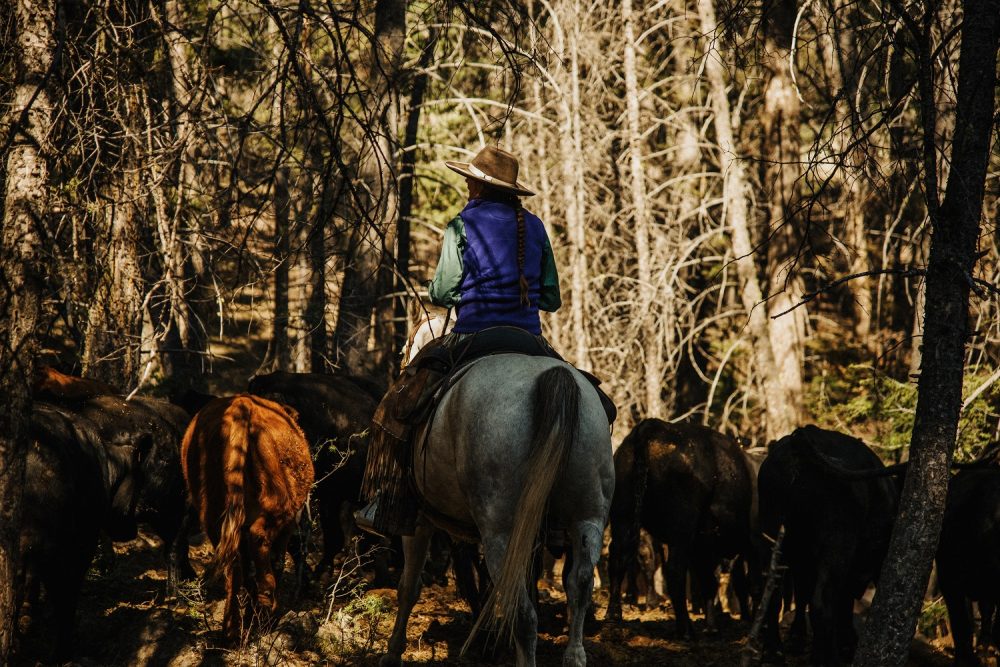
And they became the Lake Mountain Fire, a 10,000 plus acre fire that was one of the first extreme fire behavior blazes in Idaho and even the West. These extreme fires are now typical due to unprecedented fuel buildups and dryer climatic conditions.
But in 1985, it took everyone by surprise. The fire jumped massive cat lines, over 300 feet wide. It ignored retardant aircraft. Hotshot crews and smokejumpers did little. It even caused one of the first ever mass “fire shelter” deployments, where 85 crew members had to deploy their aluminum foil shelters over themselves to protect their lives from a burn over due to extreme fire behavior (all of them miraculously lived).
I remember when they walked into camp early the next morning. I got to talk to a few of them. Many didn’t want to talk; they were too traumatized. Several hours in a shelter with a fire breathing over your back with gale force winds trying to rip your only protective foil barrier out of your hands—the only thing separating you from a horrible death being made into charcoal—was more than any of them signed up for. “I have a wife and kids at home,” one contracted blackened Nomex-wearing timber faller from Salmon, Idaho told me. “I’m walking out.”
And so, I watched him shoulder his chainsaw and begin the long hike out. It was 20 miles to a main road. I’m sure someone picked him up once out of camp, but no-one dared near camp. Quitters weren’t really supported in 1985—they were considered AWOLs. Many of the crew bosses and leadership were Vietnam vets; and I would venture that most were traumatized themselves, not by fire, but by war. My opinion was that they probably shouldn’t have been leading crews in these life-threatening situations. But that’s just my opinion. It’s hard to understand the complexity of human emotion and psychology.
But fire behavior is not nearly as complex; it has many telltale signs in Idaho’s forests. Fire scars are common on trees; charcoal can be found on nearly every mountainside. Fires had always been a fact of life and death in Idaho’s forests.
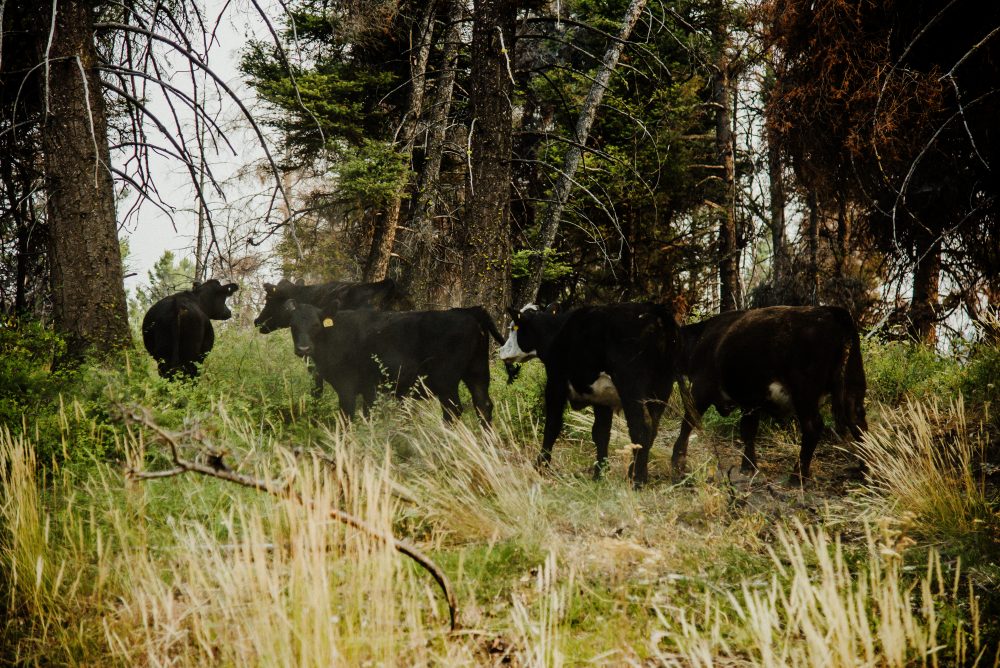
Is fire a new phenomenon? Not really. The formula has been the same for millennia: take dry late summer conditions typical of the mountain west, add lightning to dry vegetation, and you have fire. There were always many small-scale fires on Idaho’s landscapes as soon as the last ice ages retreated over 10,000 years ago.
But today, massive fires are common. And that is a new phenomenon. What changed?
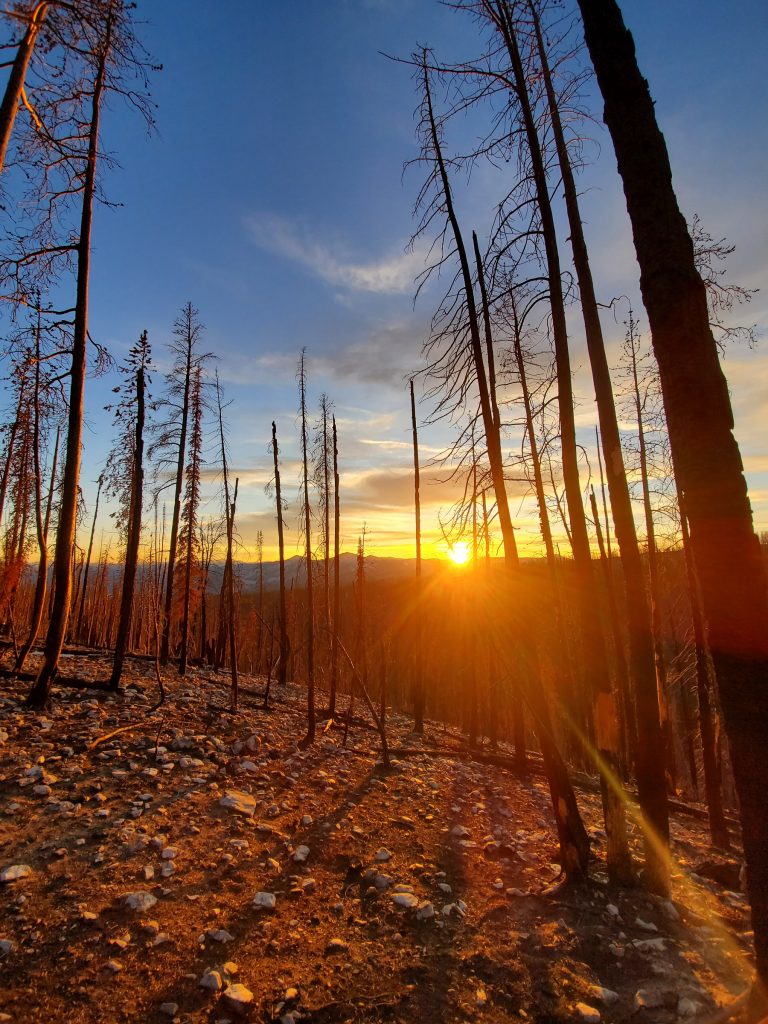
I would submit that our categorical prevention policy of the past 100 years is the place where we went wrong. Instead of allowing forests to self-thin with small, very regular fires that would have been easy for humans to manage, our halting of that natural thinning process has culminated with fires like the Lake Mountain fire of 1985. Now, ten thousand acres is small. Fires are now measured in millions of acres. It’s because of an exponential unprecedented fuel loading combined with a changing climate.
But there’s hope.
I do know that we need more controllable fires to prevent the extreme fires that we have today. Eventually, we’ll have to face the music, even though it’s pretty hard to take, and learn maybe not to love fires, but live with them. I think there’s no other way, especially in the West, than to have to learn to breathe a little smoke every now and then.
I’m not saying it’s OK that people lose their homes. I’m in no way saying “Buck up, get over it; It’s only your home or your entire life disrupted.” What I’m saying instead that if we proactively manage fire and tree stocking densities on an incredibly ramped up scale, we can stop catastrophic, disastrous home eating fires from being the norm in the West.
It’s getting back in tune with and living with nature. It’s just like on the ranch; we’ve had to learn the way of nature through things like drought (this year has been the dryest in 127 for us), blizzard and flood to learn a new paradigm of resilience. It was painful to get here. But I’ll never go back.
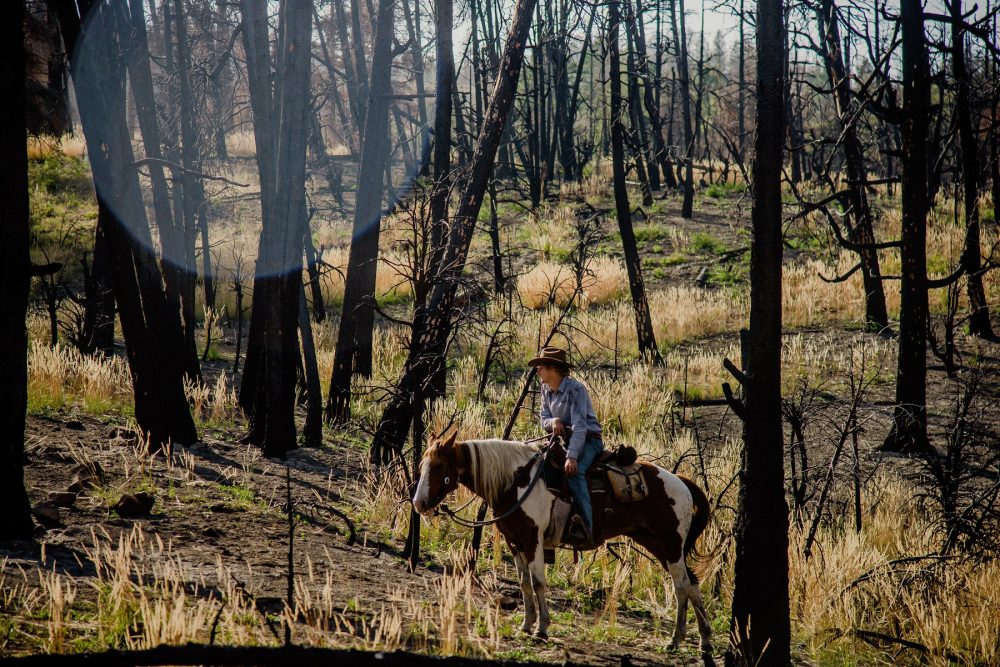
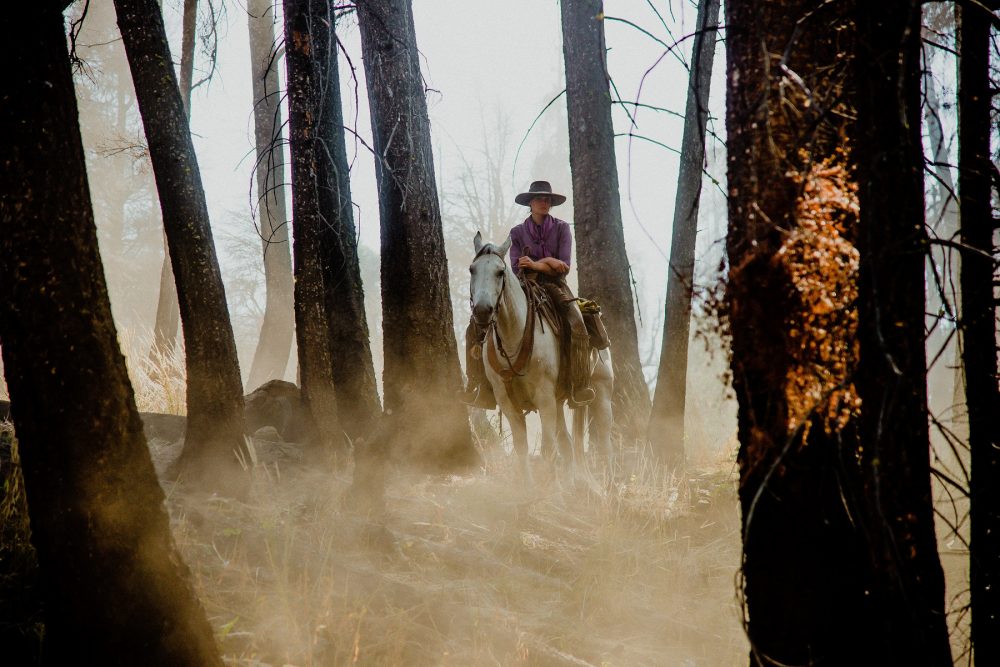
We can have resilience in our forests, too. We just lost our way for now. But it’s OK. There is a way back. All we have to do is learn how nature did it before we came along.
Happy Trails -Glenn







Gregory Hitchcock
Wonderfully composed! Thank you!
Caryl Elzinga
Thanks for taking the time to read, Gregory!
Sky Epperson
Fantastic story.
Dead on for the explanations of why and what happens with these extreme fires and what we need to do.
Caryl Elzinga
Thank you for reading, Sky! There are definitely no easy solutions, but we do believe there is hope.
Cornelia Hodosh
Great read and timely insight into the natural role of fire and the factors contributing to the pattern of increasingly intense fires that we are now witnessing. Thanks.
Glenn A. Elzinga
Cornelia
Thanks for you kind words. And thanks for raising a great son! Ben was a super crew member and was a first hand witness of so much of what I wrote about!
Also, your IG is wonderful! Beautiful images!
Glenn
Greg Poirier
Excellent story and explanation.
Glenn A. Elzinga
Greg…
Always great to hear from you. I know you’ve seen so much of what I write about in your many forays across the wide west. I always am encouraged when you respond!
– Glenn
Deb Olsen
I’m always amazed of your wealth of knowledge on so many levels. I too hope we find our way back to be in peace with planet earth for the future of generations, it will take hard work and education. Thank you for another great read!
Jeff
I remember we fought a forest fire together (although I think we were on different crews). I thought it was 1985 also, but I could be wrong. I thought it was called the Bitterroot fire, but I could be wrong with that also. I will have to scan and email you some pictures from it.
I remember groups of us sleeping together, packed like sardines, under the stars. to be awakened by the loud speaker announcing “good morning campers!”
Here is a question for you Glenn. Have you ever seen a large area where the fire burned so hot that it met the description of Malachi 4:1 leaving neither root nor branch?
(“For behold, the day is coming, burning like an oven, & all the proud, yes, all who do wickedly will be stubble. And the day which is coming shall burn them up,†says the Lord of hosts, “That will leave them neither root nor branch.”)
Natalie Blasco
Another excellent story that puts the reader right into the situation.
I shared it with my nephew because he also used to do that kind of work and lives in “fire country”. This is his response, and sadly I can”t say I disagree with his conclusions, though I still have some degree of hope:
“When I was working with CDF/CCC crews back in the early nineties I ran fire support. Getting hot line crews where they needed to be and get them whatever they needed. I was good at it, I wouldn’t take no for an answer if my crews needed it. Blistered my rig getting crews in and out of hot spots and unfortunately hauled a lot of badly injured kids out.
“A monster fire in those days was 100,000 acres. That can burn In a couple days now. This is a much more critical situation than reports are giving. Siberia is burning right now. The Russians are just letting it go. Permafrost is melting, polar ice caps are disappearing. All of this was supposed to happen in the next 50-100 years. It’s happened in 10-20. I believe it’s game over, fatal injuries to planet Earth. Or at least its inhabitants.”